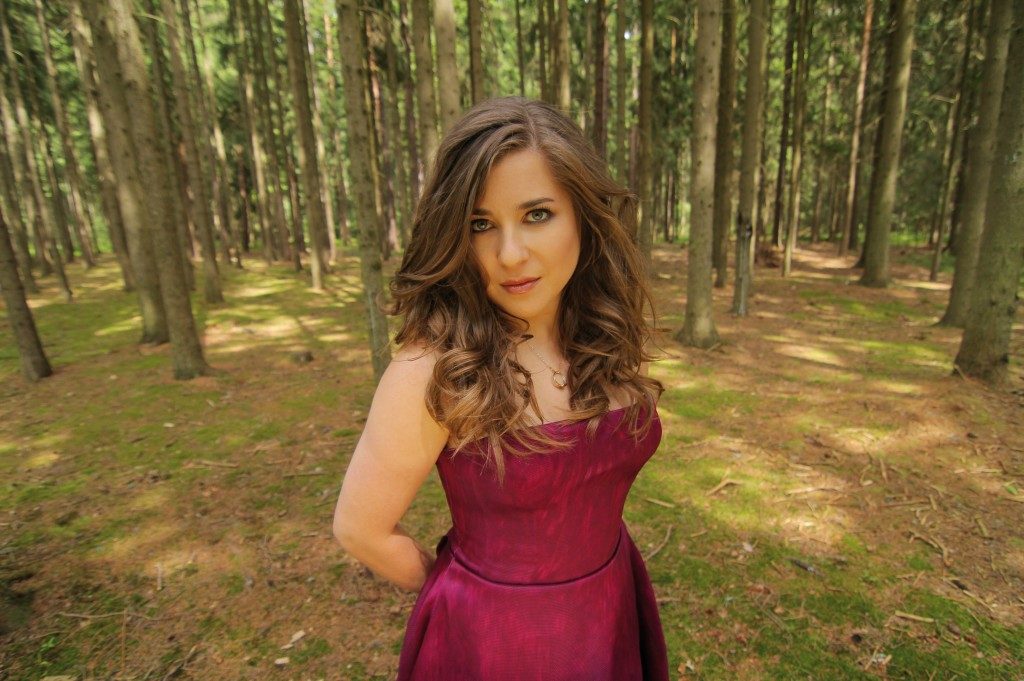Payare Celebrates Shostakovich and Britten in Second Festival Performance
Culinary comparisons may be approximate at best, but if Rafael Payare’s Thursday San Diego Symphony program was a buffet of tantalizing appetizers, his Friday program at Copley Symphony Hall was clearly the substantial main course. To open this musical feast, the Music Director Designate recycled Richard Strauss’s flashy tone poem “Don Juan” from Thursday—after all, there is only so much rehearsal time in one week—but he moved right into Benjamin Britten’s Symphony for Cello and Orchestra and then matched that monumental opus with Dmitri Shostakovich’s austere, expansive Symphony No. 10 in E Minor.

Alisa Weilerstein [photo (c) Decca-Robin Thomson]
Britten wrote his 1964 Symphony for Cello and Orchestra for Mstislav Rostropovich, one of the great cellists of the last century, and he intended the work to showcase his mastery. A mere cello concerto was insufficient, Britten explained, so he wrote a daunting four-movement work of symphonic scope. Although the work’s Moscow premiere was a success and the composer expressed pride in his accomplishment, the work is rarely performed.
Payare and cellist Alisa Weilerstein, however, made a strong case for Britten’s work, and the San Diego Symphony rose mightily to the challenge. Britten’s Symphony opens with a low rumble from the contrabass section, from which the cello soloist quickly asserts its voice in jabbing—almost violent—phrases that eventually transform into slow, contemplative themes in the instrument’s low, darker range. Weilerstein indulged these forceful accents without compromising the luster of her gorgeous tone, and she held her own securely against the counter themes of crackling woodwinds and pointillist trombone attacks.
In the heady, buzzing moments of a short scherzo, called Presto inquieto, Weilerstein displayed her awesome technical dexterity, as she had the previous night in Tchaikovsky’s more traditional “Variations on a Rococo Theme,” and Payare maintained the orchestra’s sparkling clarity for Britten’s complex textures. The menacing timpani rolls of the Adagio, the Symphony’s center of gravity, frame the soloist’s plaintive voice, a melancholy state that brought to mind the darker moments of Britten’s early masterpiece the “Serenade for Tenor, Horn and Strings,” but without the innocence of that glowing song cycle. Weilerstein unleashed the menace of the great cadenza, deftly integrating its pizzicato dissonances into a stream of stark flourishes. Britten ends his Symphony with a passacaglia, one of his favorite devices: the cello sounds its low theme, from which the orchestra launches into a set of whirlwind variations.
Reflecting on this Symphony for Cello and Orchestra, I would suggest that the poetry of Britten’s vocal and choral works, as well as the humanism they express, is the key to his accessibility. But although the hard-egded modernism of this Symphony may challenge the endurance of the listener, the reward proves substantial.
In contrast to the obscurity Payare’s Britten selection, Shostakovich’s Tenth Symphony (completed in 1953) is one of the composer’s most frequently performed symphonies—only his Fifth is more popular. Structurally, however, these works by Britten and Shostakovich have much in common. Each begins with a potent theme delivered by the low strings, and their opening movements are unusually extended; in each the second movement is a concise, acerbic scherzo; in each the third movement reveals the composer’s deepest intentions and most personal ruminations; each final movement contains surprising twists that have given critics and analysts ample fodder for dispute and exegesis.
I admired the bold, majestic sonority—propelled by the highly unified horn section—that Payare commanded especially in the first movement of the Shostakovich, as well as the urgent, propulsive phrasing that moved the Symphony along. Conducting without a score, Payare can appear overly athletic on the podium, but all of his energetic thrusts communicate clear interpretive results he feels the score requires. I noted that in the diabolical scherzo, his body remained fixed in the center of the podium, indicating to the musicians the importance of unfailing rhythmic unity, while his arms and hands furiously communicated ripping, essential details.
Like the numerologists who find hidden meanings in Bach’s themes, some analysts see a secret billet doux that the composer wrote to a student of his at the time in the Symphony’s lyrical third movement. But for those who find Shostakovich forbidding, the simpler, more balanced themes of this movement welcome skeptical listeners into this composer’s world.
Among the many soloists heard in this work, allow me to hail Principal Clarinet Sheryl Renk for her exquisitely shaped melodies and velvet tone offered with unfailing grace throughout the Tenth Symphony.
My interpretation of these two inaugural concerts conducted by the new Music Director Designate as part of the San Diego Symphony’s “Hearing the Future” festival is that he means business. Yes, Payare can turn out standard repertory favorites with great panache, but when it comes to pivotal, challenging works from the second half of the 20th century, there will be no coddling of those who still think Ravel is still too challenging for their ears. And he will deliver this repertory with such compelling authority that the naysayers will have no ground on which to stand.
This performance by the San Diego Symphony was given on Friday, January 11, 2019, in the Jacobs Music Center’s Copley Symphony Hall in downtown San Diego. It will be repeated in the same venue January 12 & 13, 2019. The “Hearing the Future” festival continues through January 26, 2019, in various San Diego venues.

Ken Herman, a classically trained pianist and organist, has covered music for the San Diego Union, the Los Angeles Times’ San Diego Edition, and for sandiego.com. He has won numerous awards, including first place for Live Performance and Opera Reviews in the 2017, the 2018, and the 2019 Excellence in Journalism Awards competition held by the San Diego Press Club. A Chicago native, he came to San Diego to pursue a graduate degree and stayed.Read more…


